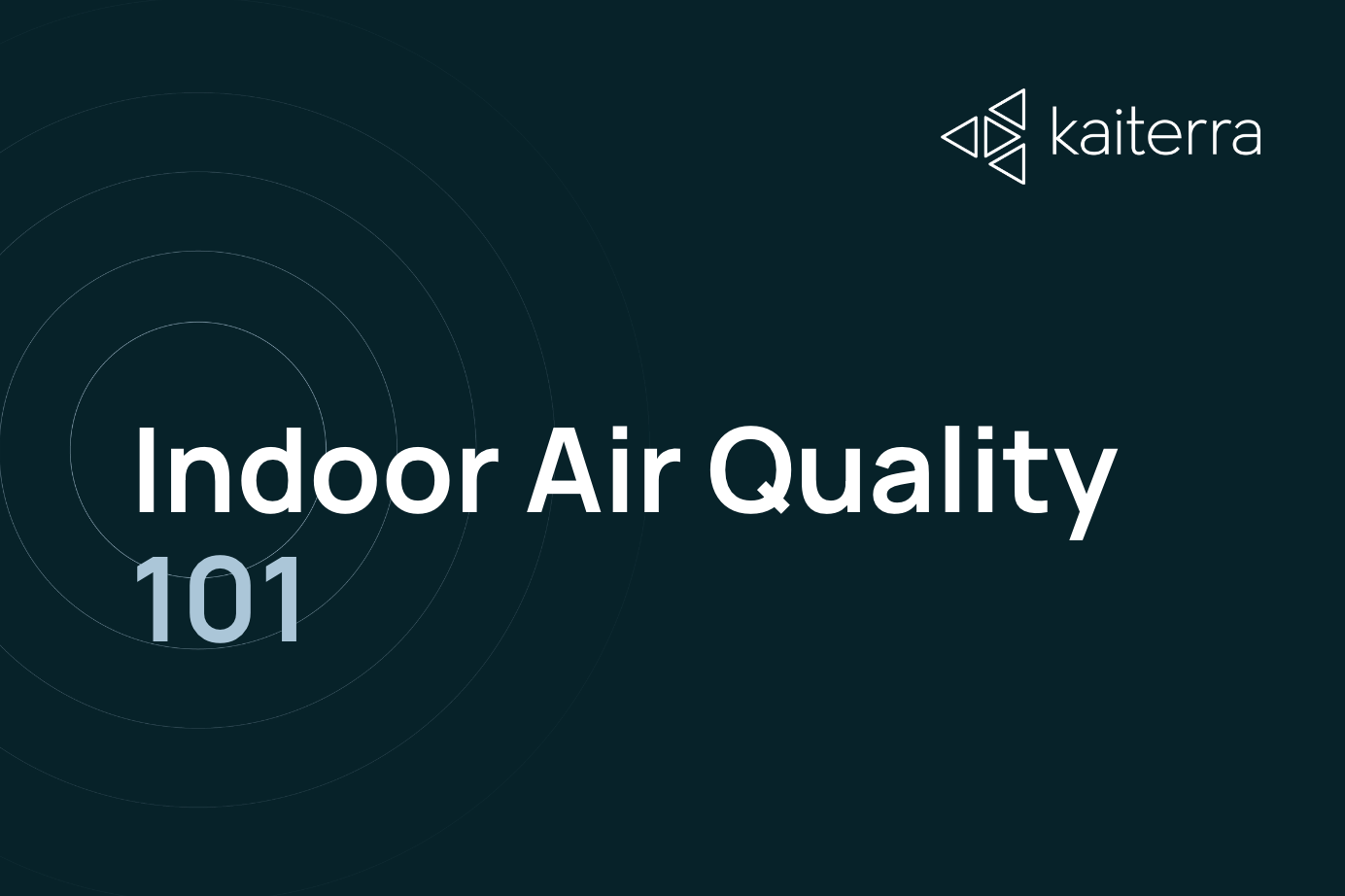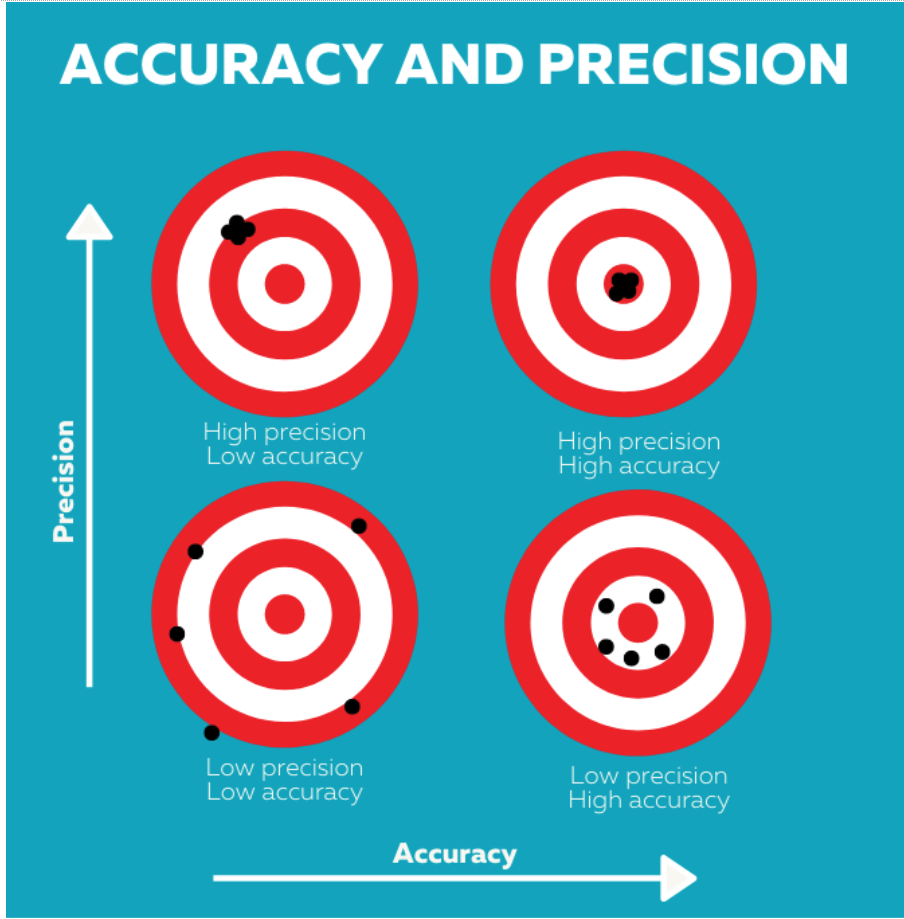Newsletter
For your building project to be successful, it’s critical to be 100% clear on how these terms relate to IAQ monitoring and impact your project. To discuss the details of your implementation and see which air quality monitor is right for your business, chat with our team:
When assessing indoor air quality (IAQ) sensors, building experts come across many technical terms. In particular, accuracy, precision, and resolution are critical elements needed to understand sensor performance. In this overview, we break down the definition of each term and what it means when determining the right monitor.
What Is Accuracy?
The accuracy of the sensor is the closeness of a measured value to a known value. To visualize this, imagine playing darts. The dart that lands closest to the bullseye would be considered the most accurate.
Accuracy is the most important specification in indoor air quality because it guarantees that the sensor’s readings will be as close to the known value as possible.
For example, HVAC systems rely heavily on sensor data to regulate and maintain IAQ levels through targets and limits. Without this information, the system can’t really function. For example, if you want to keep the PM2.5 levels below 25 micrograms (as recommended by the World Health Organization), you’d need accurate data in order to automatically trigger commands when levels exceed the recommended thresholds.
What Is Precision?
Precision can be described as the reproducibility of measurements. When your sensors are precise, your readings will be consistent.
Going back to the bullseye analogy, if you were to throw ten darts with high precision, they should all land very close to each other, regardless of how close they are to the bullseye. High precision readings mean that you can trust your readings to be reliable and consistent.
How Do Precision & Accuracy Relate To Each Other?
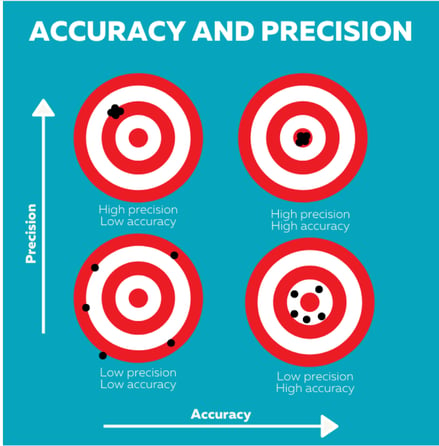
Here’s a helpful illustration that demonstrates the differences between the two terms. It also depicts the ideal sensor performance scenario, which is high precision, high accuracy. If you place the same sensors side-by-side, readings should be consistent (meaning that the device is precise) and as close to the known value as possible (meaning that it’s accurate).
What is Resolution?
Resolution is defined as the smallest, yet distinguishable change in values. The higher the resolution, the more specific the values will be.
Take two scales, for example. One scale measures to two decimal places (.01 kg), while another scale measures to a whole integer (1 kg). The scale that measures by 0.01 kg is much more sensitive to changes in weight, and will provide finer readings.
A high resolution sensor will detect fine-grained changes in air quality. This is especially important for projects seeking to attain building certifications. For example, the WELL Standard requires a minimum CO2 sensor resolution of 25 parts per million (ppm). To meet this standard, a sensor must have a resolution of 25ppm or finer.
Evaluating Sensor Performance
Sensors with high accuracy, precision, and resolution help projects meet the monitoring requirements of industry certifications, as well as ensure that the systems responsible for maintaining high air quality standards are able to effectively do their job.
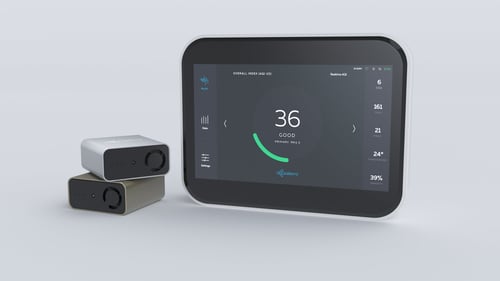
Sensedge, and the more recently introduced Sensedge Mini are professional-grade air quality monitors that are specifically designed to help meet the IAQ monitoring needs of any commercial project. They empower commercial building owners to accurately measure the quality of air indoors and work towards improving it. All sensors undergo a rigorous certification and calibration process to test for high accuracy, precision, and resolution. This guarantees that they can deliver high-performing data over time and in various conditions.
To see if the Sensedge is fit for your project, learn more here:





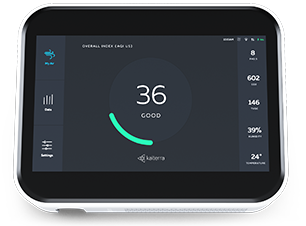
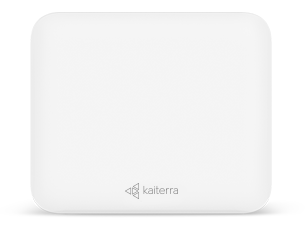
.png?width=306&height=226&name=Menu%20C%20(2).png)
.png)
